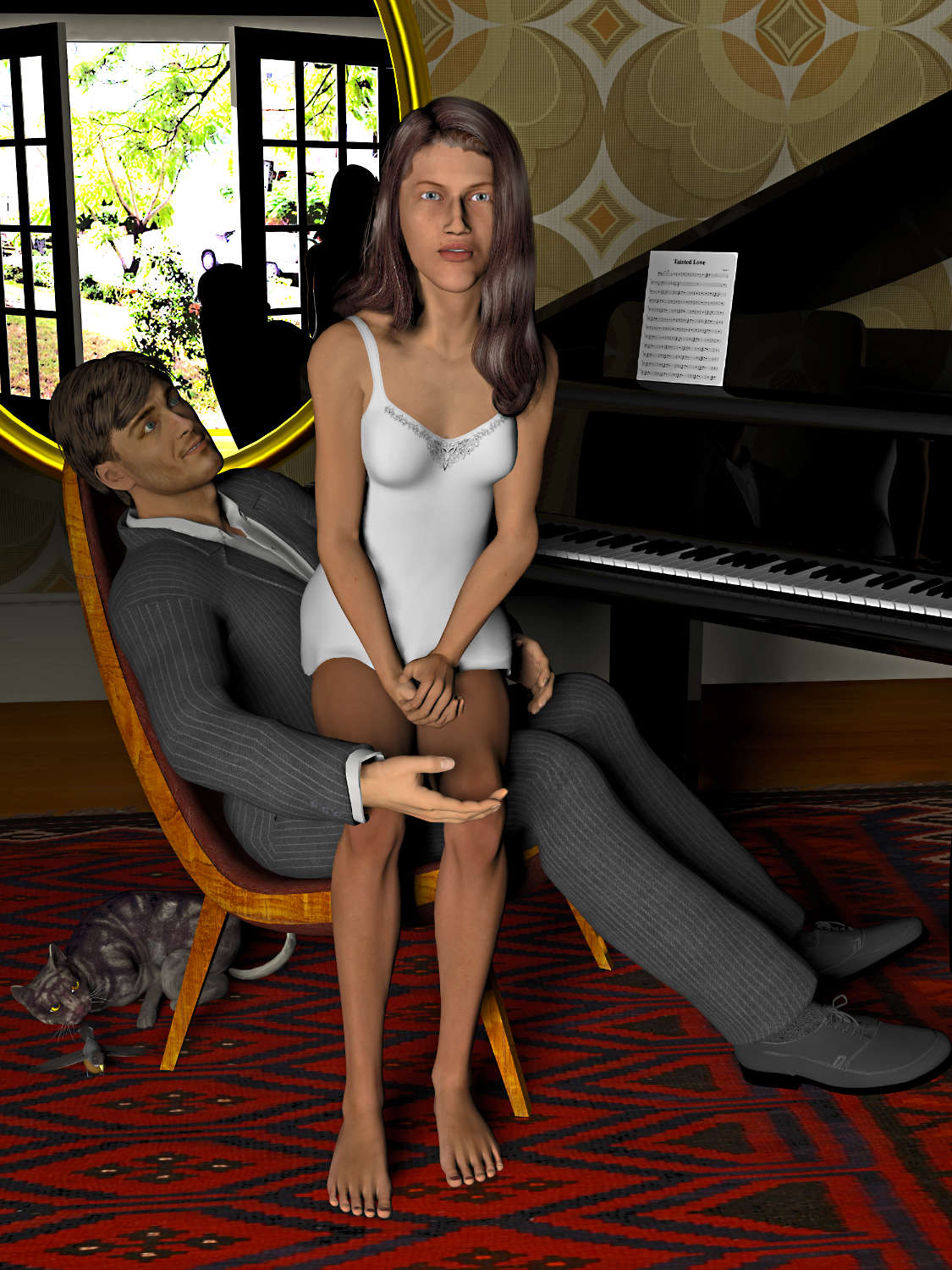
The Awakening Conscience
2011
Inkjet on watercolour paper
85 x 64 centimeters
During the 1970's when I was an art student, my interest was piqued by an art movement that had been quite deliberately ignored by my lecturers in art history discussions. The Pre-Raphaelite Brotherhood, a British Victorian art movement, presented a visual language completely at odds with the values of modernist thinking, the Pre-Raphaelites like to project moral values using an aesthetic that prized clarity of detail in lush oil paint.
William Holman Hunt's 1853 painting, The Awakening Conscience, is an interesting example of this Victorian moralism, however it is based upon a conceit. It shows a young woman experiencing an epiphany; if she submits to the man's sexual invitation she will likely become a fallen woman who may need to resort to prostitution once he has tired of her, a fate seen as a punishment for immorality in strait-laced 19th. century England. The model Hunt used for his painting was his 15 year old girlfriend.
Hunt's painting is embedded with symbolic clues that re-enforce this narrative and a couple I've chosen to include are the cat toying with a small bird and the song sheet on the piano, here updated to the great 1960's Motown classic, Tainted Love. The cloying busyness of Hunt's bachelor pad has been toned down somewhat for this reimagining to suit a more twentieth century sensibility. 1970s wallpaper frames a simple gilded mirror reflecting a sunlit garden which beckons the woman to escape from her potential corruption.
William Holman Hunt | The Awakening Conscience, 1853